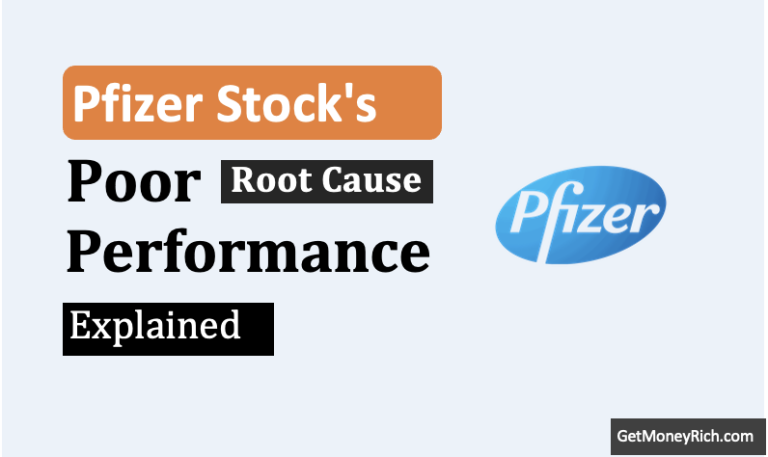If you’ve been keeping an eye on the semiconductor space, you know it’s been a wild ride lately. NVIDIA and Intel, two giants in the chip game, just dropped their latest quarterly earnings. NVIDIA’s Q4 fiscal 2025 (ended January 26, 2025) and Intel’s Q4 fiscal 2024 (ended December 31, 2024). I thought it’d be fun to sit down, grab a coffee, and break these numbers apart to see what’s really going on under the hood. So, let’s dive into the nitty-gritty of revenue, margins, growth, EPS, cash flow, and cash balance. This post will be basically, a full-on fundamental analysis showdown. Ready? Let’s go!
NVIDIA vs. Intel: Q4 Financials at a Glance
| Metric | NVIDIA (Q4 FY 2025) | Intel (Q4 FY 2024) |
|---|---|---|
| Revenue | $39.33 billion | $14.3 billion |
| Revenue Growth (YoY) | +78% | -7.0% |
| Gross Margin | 73% | 42.8% (GAAP) / 44% (non-GAAP) |
| Net Income | $22.09 billion | -$169 million (GAAP) / $486 million (non-GAAP) |
| Profit Growth (YoY) | +80% | Improved from -$2.6B (GAAP) |
| Earnings Per Share | $0.89 (adjusted) | -$0.03 (GAAP) / $0.13 (non-GAAP) |
| EPS Growth (YoY) | +82% (adjusted) | From -$0.63 to -$0.03 (GAAP) |
| Operating Cash Flow | Not specified (strong historically) | $3.8 billion |
| Free Cash Flow | Robust (est. from $27B FY 2024) | -$2.8 billion |
| Cash Balance | $31.4 billion | $25 billion |
| Debt | Minimal pressure | $48 billion |
Revenue
NVIDIA’s rocket ship vs. Intel’s steady(ish) boat.
First up, revenue, the big topline number everyone loves to talk about.
NVIDIA absolutely crushed it this quarter, pulling in $39.33 billion. That’s a 12% jump from the previous quarter and a jaw-dropping 78% surge year-over-year. It’s like NVIDIA strapped a rocket booster to its data center business and said, “See ya later.”
The AI boom is clearly their golden ticket, with those GPUs flying off the shelves for data centers and AI workloads.
Intel, on the other hand, brought in $14.3 billion. Not bad, right? It’s actually a beat against analyst expectations of $13.81 billion, which is a win in my book. But here’s the kicker, it’s down 7% from the same quarter last year. So, while NVIDIA’s riding the AI wave like a pro surfer, Intel’s more like a sturdy boat trying to navigate some choppy waters.
They’re still in the game, but that year-over-year dip isn’t exactly a confidence booster.
Winner? NVIDIA, hands down. That $39.33 billion vs. $14.3 billion gap is just too massive to ignore.
Margins
Now, let’s talk margins, how much of that revenue actually turns into profit before all the other expenses kick in.
NVIDIA’s gross margin for Q4 was 73%, down a smidge from last year’s 76% due to pricier new data center products like Blackwell. Still, 73% is insanely good, it means they’re keeping a huge chunk of every dollar they make. That’s the kind of efficiency you dream about as an investor.
Intel’s gross margin came in at 42.8% on a GAAP basis, or 44% non-GAAP. That’s a decent step up from their guidance, and it’s a sign their cost-cutting efforts are starting to pay off. But compared to NVIDIA’s 73%, it’s like bringing a butter knife to a gunfight.
Intel’s got a more traditional mix of products, CPUs for PCs, servers, and some AI stuff, but they’re not raking in the same kind of profitability per sale.
Winner? NVIDIA again. Those sky-high margins show they’re not just growing fast—they’re growing smart.
Growth
What’s the revenue and profit trajectories?
Growth is where things get really interesting.
NVIDIA’s revenue growth is bonkers, up 78% year-over-year, like I mentioned. Profit growth is even crazier, net income hit $22.09 billion, up from $12.29 billion a year ago. That’s an 80% leap in profits. They’re not just selling more; they’re making way more money on what they sell, thanks to premium AI chips and tight operations.
Intel’s story is less rosy. Revenue’s down 7% year-over-year, and profit? Well, they posted a GAAP net loss of $169 million this quarter, compared to a $2.6 billion loss a year ago. On a non-GAAP basis, they eked out a $486 million profit, which is better than last year’s non-GAAP loss. But it’s still peanuts next to NVIDIA’s haul.
Intel’s trying to turn the ship around, new AI PCs and foundry plans are in the works. But growth isn’t their strong suit right now.
Winner? NVIDIA. It’s not even close—explosive revenue and profit growth vs. Intel’s decline and modest recovery.
EPS Growth
What’s in it for shareholders?
Earnings per share (EPS) is where shareholders really perk up, and NVIDIA’s delivering big time.
Their adjusted (non-GAAP) EPS was $0.89, beating estimates of $0.84 and up from $0.49 a year ago. That’s an 82% jump YOY of EPS alone. Even after a 10-for-1 stock split last year, they’re still cranking out serious per-share value. It’s a proof to how well they’re scaling profits alongside all that revenue.
Intel’s EPS is a mixed bag.
GAAP EPS was a loss of $0.03 per share, an improvement from last year’s $0.63 loss. Non-GAAP EPS was $0.13, which beat expectations and flipped last year’s loss into a small gain. It’s progress, sure, but it’s a far cry from NVIDIA’s $0.89. Intel’s got more shares outstanding and less profit to spread around, so shareholders aren’t exactly popping champagne.
Winner? NVIDIA. That EPS growth is a shareholder’s dream—Intel’s just not in the same league here.
Cash Flow Health
Cash flow is the lifeblood of any company. So let’s check the pulse.
NVIDIA’s free cash flow isn’t explicitly broken out in the Q4 headline numbers, but we can infer from past trends, they’ve been a cash-generating machine. Last fiscal year (2024), they churned out $27 billion in free cash flow, up 609% from 2023. With net income soaring to $22.09 billion this quarter, their cash flow’s likely still robust. Even with heavy R&D and capex spending on Blackwell and beyond, their free cash flow will be strong.
Intel’s cash flow situation is trickier. For Q4, operating cash flow was $3.8 billion, down from $4.4 billion a year ago, reflecting weaker earnings. Free cash flow was negative $2.8 billion. It’s an improvement from negative $5.1 billion last year, thanks to lower capital spending.
Intel is burning cash on factory upgrades and foundry ambitions. But they’re not drowning, yet. Still, it’s a stark contrast to NVIDIA’s cash-printing press.
Winner? NVIDIA. Positive, massive cash flow vs. Intel’s negative territory? No contest.
Cash Balance
How much is in the war chest?
Finally, let’s peek at the cash balance, how much these companies have stashed away.
NVIDIA ended Q4 with $31.4 billion in cash, cash equivalents, and marketable securities. It’s up from $25.9 billion last quarter. That’s a hefty war chest, giving them tons of flexibility for R&D, acquisitions, or just weathering any storms. They’re sitting pretty.
Intel closed Q4 with $25 billion in cash and short-term investments. It was supported by $1.1 billion from the CHIPS Act this quarter (and another $1.1 billion in January 2025). It’s a solid pile, but they’re also juggling $48 billion in debt. So their net cash position isn’t as comfy as NVIDIA’s. Intel has got room to maneuver, but not as much as their rival.
Winner? NVIDIA. More cash, less debt pressure—it’s a cleaner balance sheet.
Conclusion
Its about NVIDIA’s dominance vs. Intel’s possible turnaround.
NVIDIA vs. Intel: Who Won Each Round?
| Category | Winner | Remarks |
|---|---|---|
| Revenue | NVIDIA | $39.33B vs. $14.3B—no contest, NVIDIA’s AI-driven haul dwarfs Intel’s. |
| Margins | NVIDIA | 73% vs. 44%—NVIDIA’s keeping way more per dollar, pure efficiency flex. |
| Growth | NVIDIA | 78% revenue, 80% profit growth vs. Intel’s -7% revenue drop? Night and day. |
| EPS Growth | NVIDIA | 82% jump to $0.89 vs. Intel’s modest recovery—shareholders love NVIDIA. |
| Cash Flow Health | NVIDIA | Massive cash generation vs. Intel’s negative $2.8B—NVIDIA’s a money printer. |
| Cash Balance | NVIDIA | $31.4B with less debt pressure vs. Intel’s $25B and $48B debt—NVIDIA’s cozier. |
So, what’s the takeaway?
NVIDIA’s Q4 fiscal 2025 was a masterclass in growth and profitability. $39.33 billion in revenue, 73% margins, 80% profit growth, and a fat cash pile. They’re the undisputed champ of the AI era. NVIDI is riding the wave of data center demand and leaving competitors in the dust.
Intel’s $14.3 billion revenue, 44% margins, and negative free cash flow tell a different story. It looks like a company fighting to stabilize after a rough patch. They’re making progress (beating estimates, narrowing losses), but they’re not out of the woods.
For investors, NVIDIA looks like the golden goose. They are reporting high growth, high margins, and a fortress of cash. Intel’s more of a turnaround play, cheaper valuation, some green shoots, but plenty of risks (CEO transition, foundry costs).
If you’re betting on the future of AI, NVIDIA’s your horse. If you’re rooting for a comeback kid, Intel might be worth a look.
What do you think? Are you team NVIDIA, or do you see Intel pulling off a surprise? Drop your thoughts below—I’d love to chat about it!





